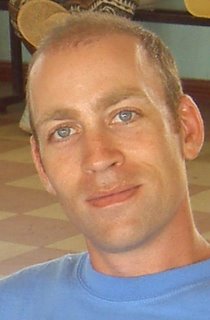
Just the three of us...
Waves reflected sunlight off mirrored tips and back into our faces as the boat made steady progress across the small stretch of Indian Ocean separating the island of Nosy Mangabe and the Masoala peninsula. Masoala, Malgache for “eyes of the forest,” in Madagascar’s northeast is where tropical forest abruptly meets ocean in an awesome display—and array—of flora and fauna found nowhere else on the great island. Kristen, Jared and I were in search for as much of this diversity as could be fit into a four-day stay on the peninsula, and Bidas, our guide, was keen on helping us meet this objective. The reflected sunlight, the constant whine from the boat’s engines, and the rocking action of the waves lulled us into a somnolent state, and we looked through squinted eyes as the peninsula neared.
We had already spent one day and night on Nosy Mangabeand saw almost all that the island has to offer by way of celebrity fauna. We spotted leaf-tailed geckos (thanks to Kristen’s bright eyes), malachite kingfishers, and a miniscule member of the chameleon family, a Burcesia, that measured less than an inch long. We failed, however, to observe the island’s most elusive superstar, the aye-aye. Aye-ayes are possibly the most freakish member of the lemur family: a Frankenstein’s lemur with bat ears, rodent teeth, and a long skeletal middle-finger tipped with a talon that it uses to skewer tree-dwelling insects and to open seed pods. One population of the species was relocated to the island in the 1970s by the government of Madagascar in an attempt to avoid extinction. Thanks to conservation efforts over the last thirty years, small populations of aye-ayes can be found elsewhere on the main island, however, Nosy Mangabe still tops the list for aye-aye density.

Burcesia chameleon
After landing and getting installed in our bungalows, we settled into a comfortable and predictable pattern of eating, hiking, eating, snorkeling, playing UNO, eating, and chilling out. One evening before supper we walked to a nearby community to watch a dance performance. A group of about 12 women and one man sat waiting for us. The man began to beat an empty plastic 20 liter water jug with a stick and some of the women had crude percussion instruments to accompany his playing. Then the man led the women in some call-response style songs. When we arrived we noticed a length of a wooden plank laid out in front of the seated women. Soon it became clear what its purpose was in performance. As the singing gained momentum, pairs of women stood up took turns dancing and stomping atop the wooden plank, using their feet to punctuate the beat of the music.
The highlight of the dance for me came from an unexpected performance of the Chicken Lady. During one number an old woman came cruising past the dancers carrying a chicken in one hand and a machete in the other, seemingly en route to her home. However, in passing the group, the Chicken Lady stopped and put her point on the floor—along with said chicken and machete—and stole some of the spotlight from the two women dancing on the plank.
Every day we hiked with Bidas to a new part of the peninsula, and the peninsula never disappointed. In addition to wonderful animals like the red-ruffed lemurs and the Technicolor panther chameleons, we also saw some amazing plants. Epiphytic orchids tucked themselves into nooks and crannies, and we saw huge Palisandra and Rosewood trees with giant buttresses supporting massive boles. At every turn we were surprised and delighted at the innovativeness with which the peninsula residents have shown to adapt so well to their environment. Several animals, particularly insects, have mastered the art of camouflage and stealth, adding to the simultaneous frustration and delight of us would-be seekers.

Panther Chameleon
Our stay on the island was cut unexpectedly short. On Christmas Eve night, Bidas stopped by our bungalow seeking first aid for our boat captain, who, he said, had a cut hand. We asked that the captain be brought by, and when we saw him realized from the crude, bloody dressing that we might have a problem. Removing the dressing revealed a gash on the back of his hand, and upon its closer inspection, Doctors Pappas and Patterson (K) diagnosed a severed vessel, most likely a vein since bleeding had already mostly stopped. With nurse Patterson (D) assisting, the good doctors cleaned and bandaged the hand. Afterwards we decided to return to Maroansetra the next day, a day earlier than scheduled, so the captain could go by a clinic for proper treatment.
Back on board the boat, retracing our path from a few days before, the inevitable reality began to descend on us that our time in paradise was nearly up. The peninsula shrank from view and the eyes of the forest watched us go.

Sunset on Masoala
